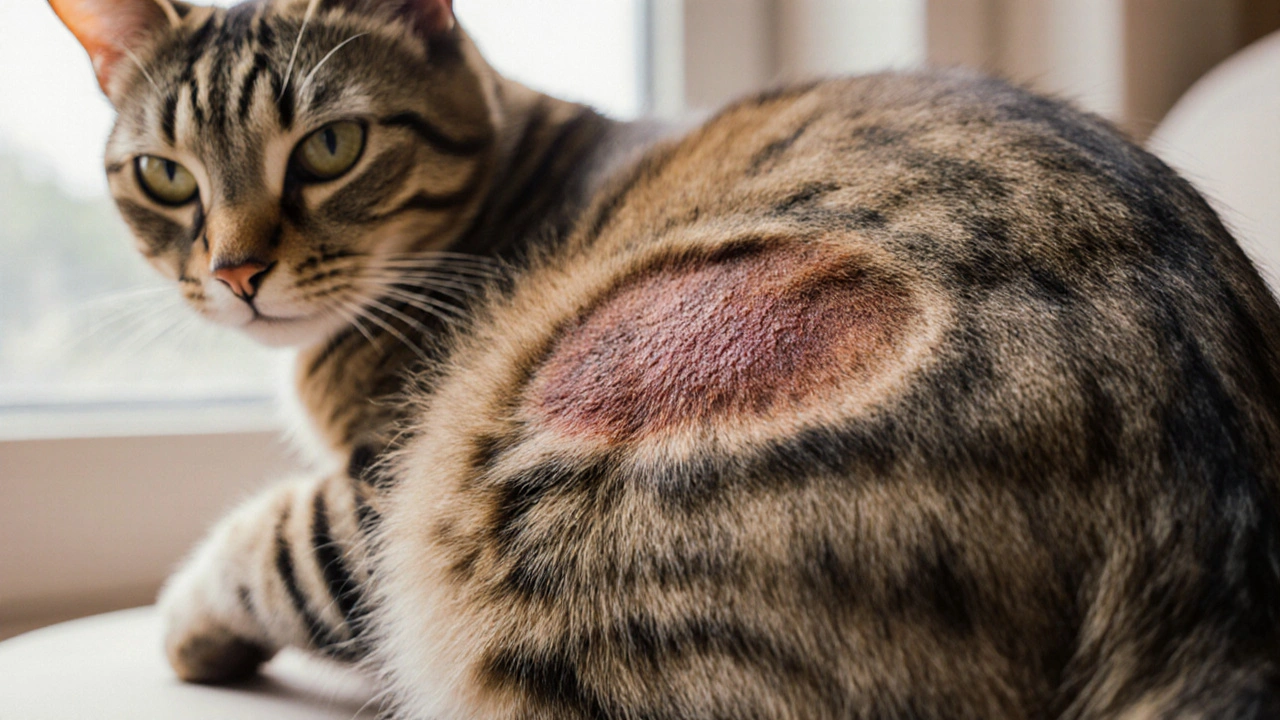Veterinary Care for Ringworm: What Every Pet Owner Should Know
When it comes to veterinary care for ringworm, the management of a contagious fungal skin infection in animals. Also known as dermatophyte infection, it can affect dogs, cats, rabbits and even livestock. Effective control requires a clear diagnosis, proper medication and strict hygiene. The same approach Ringworm (Dermatophyte infection), is caused by fungi that feed on keratin and spreads through direct contact or contaminated environments. A typical veterinary plan combines Topical antifungal treatment, creams, shampoos or sprays applied to lesions with systemic options when needed.
Key Aspects of Managing Ringworm in Pets
First, Veterinary diagnosis, includes Wood's lamp examination, fungal culture and PCR testing to confirm the culprit species. A quick, accurate test saves time and prevents unnecessary medication. Once confirmed, the clinician decides whether topical only or a combination with oral antifungal medication such as itraconazole or terbinafine is best. The choice depends on lesion severity, animal size and the presence of infection on the scalp or nails. Most mild cases clear with creams applied twice daily for three weeks, while extensive skin involvement often needs a four‑to‑six‑week oral course.
Second, species matters. Dogs typically develop circular, scaly patches on the face, ears and paws, while cats may show hair loss on the head and forelimbs. Rabbits and ferrets can have more subtle lesions, making thorough skin checks essential. Even livestock can suffer, especially lambs and calves, where ringworm can affect herd health and market value. Understanding which animal you treat tailors both dosage and environmental control steps.
Third, environmental hygiene is a game‑changer. The fungi survive weeks in bedding, grooming tools and grooming tables. Regularly washing all fabrics in hot water, vacuuming with HEPA filters and using diluted bleach solutions on surfaces cuts reinfection risk. Disinfecting grooming tools after each use prevents cross‑contamination between pets. Owners who neglect these steps often see recurring outbreaks despite correct medication.
Fourth, owner compliance drives success. Applying creams correctly, giving oral meds with food, and keeping the pet isolated from other animals for the treatment window are all crucial. Simple reminders—like setting a daily alarm or tying medication to feeding times—help maintain consistency. When owners miss doses, the fungus can rebound, leading to longer treatment and higher costs.
Fifth, monitoring progress is vital. Veterinarians usually schedule rechecks at two‑week intervals, using the same diagnostic tools to verify clearance. If lesions persist, the vet may adjust the drug type or increase the duration. Some cases benefit from adding a soothing shampoo to reduce itching and prevent secondary bacterial infections.
Sixth, consider the pet’s overall health. Underlying conditions such as immunosuppression, hormonal disorders or poor nutrition can predispose animals to chronic ringworm. Addressing these factors—through diet changes, vaccine updates or managing endocrine disease—boosts the immune response and shortens recovery time.
Seventh, myths can mislead owners. Many think that over‑the‑counter human creams work for pets, but formulations differ in concentration and can irritate animal skin. Another common misconception is that ringworm isn’t serious because it’s “just a fungus.” In reality, severe infections can cause pain, secondary infections and costly downtime for working animals.
Eighth, prevention goes beyond treatment. Regular grooming, routine skin exams during veterinary visits, and limiting exposure to infected environments (like pet shelters or farms with known outbreaks) reduce the odds of an initial infection. Vaccines for ringworm exist for livestock, and using them where appropriate adds another protective layer.
All these pieces—accurate diagnosis, tailored medication, strict hygiene, owner diligence and overall health management—interlock to form a robust veterinary care for ringworm strategy. The next section lists detailed articles that dive deeper into each of these topics, from the science behind antifungal drugs to step‑by‑step cleaning protocols, so you can confidently tackle ringworm in any animal under your care.

